SNOSAW8E May 2008 – September 2015 LM7321 , LM7322
PRODUCTION DATA.
- 1 Features
- 2 Applications
- 3 Description
- 4 Revision History
- 5 Description continued
- 6 Pin Configuration and Functions
- 7 Specifications
- 8 Detailed Description
- 9 Application and Implementation
- 10Power Supply Recommendations
- 11Layout
- 12Device and Documentation Support
- 13Mechanical, Packaging, and Orderable Information
7 Specifications
7.1 Absolute Maximum Ratings
over operating free-air temperature range (unless otherwise noted)(1)(4)| MIN | MAX | UNIT | ||
|---|---|---|---|---|
| VIN Differential | ±10 | V | ||
| Output Short Circuit Current | See (2) | |||
| Supply Voltage (VS = V+ - V−) | 35 | V | ||
| Voltage at Input/Output pins | V+ + 0.8 | V− − 0.8 | V | |
| Junction Temperature(3) | 150 | °C | ||
| Soldering Information: | Infrared or Convection (20 sec.) | 235 | °C | |
| Wave Soldering (10 sec.) | 260 | °C | ||
| Storage Temperature | −65 | 150 | °C | |
(1) Stresses beyond those listed under Absolute Maximum Ratings may cause permanent damage to the device. These are stress ratings only, which do not imply functional operation of the device at these or any other conditions beyond those indicated under Recommended Operating Conditions. Exposure to absolute-maximum-rated conditions for extended periods may affect device reliability.
(2) Applies to both single-supply and split-supply operation. Continuous short circuit operation at elevated ambient temperature can result in exceeding the maximum allowed junction temperature of 150°C. Short circuit test is a momentary test. Output short circuit duration is infinite for VS ≤ 6V at room temperature and below. For VS > 6V, allowable short circuit duration is 1.5 ms.
(3) The maximum power dissipation is a function of TJ(MAX), RθJA. The maximum allowable power dissipation at any ambient temperature is PD = (TJ(MAX)) – TA)/ RθJA. All numbers apply for packages soldered directly onto a PCB.
(4) If Military/Aerospace specified devices are required, please contact the Texas Instruments Sales Office/Distributors for availability and specifications.
7.2 ESD Ratings
| VALUE | UNIT | |||
|---|---|---|---|---|
| V(ESD) | Electrostatic discharge(3) | Human body model (HBM), per ANSI/ESDA/JEDEC JS-001(1) | ±2000 | V |
| Charged-device model (CDM), per JEDEC specification JESD22-C101(2) | ±1000 | |||
| Machine Model | 200 | |||
(1) JEDEC document JEP155 states that 500-V HBM allows safe manufacturing with a standard ESD control process.
(2) JEDEC document JEP157 states that 250-V CDM allows safe manufacturing with a standard ESD control process.
(3) Human Body Model, applicable std. MIL-STD-883, Method 3015.7. Machine Model, applicable std. JESD22-A115-A (ESD MM std. of JEDEC)Field-Induced Charge-Device Model, applicable std. JESD22-C101-C (ESD FICDM std. of JEDEC).
7.3 Recommended Operating Conditions
| MIN | MAX | UNIT | ||
|---|---|---|---|---|
| Supply Voltage (VS = V+ - V−) | 2.5 | 32 | V | |
| Temperature Range(1) | −40 | 125 | °C | |
(1) The maximum power dissipation is a function of TJ(MAX), RθJA. The maximum allowable power dissipation at any ambient temperature is PD = (TJ(MAX)) – TA)/ RθJA. All numbers apply for packages soldered directly onto a PCB.
7.4 Thermal Information
| THERMAL METRIC(2) | LM7321 | UNIT | |||
|---|---|---|---|---|---|
| D (SOIC) | DBV (SOT) | DGK (VSSOP) | |||
| 8 PINS | 5 PINS | 8 PINS | |||
| RθJA(1) | Junction-to-ambient thermal resistance | 165 | 325 | 235 | °C/W |
(1) The maximum power dissipation is a function of TJ(MAX), RθJA. The maximum allowable power dissipation at any ambient temperature is PD = (TJ(MAX)) – TA)/ RθJA. All numbers apply for packages soldered directly onto a PCB.
(2) For more information about traditional and new thermal metrics, see the Semiconductor and IC Package Thermal Metrics application report, SPRA953.
7.5 2.7-V Electrical Characteristics
Unless otherwise specified, all limits ensured for TA = 25°C, V+ = 2.7 V, V− = 0 V, VCM = 0.5 V, VOUT = 1.35 V, and RL > 1 MΩ to 1.35 V.(1)| PARAMETER | TEST CONDITION | MIN(3) | TYP(2) | MAX(3) | UNIT | ||
|---|---|---|---|---|---|---|---|
| VOS | Input Offset Voltage | VCM = 0.5 V and VCM = 2.2 V | −5 | ±0.7 | +5 | mV | |
| TA = –40°C to +125°C | −6 | +6 | |||||
| TC VOS | Input Offset Voltage Temperature Drift | VCM = 0.5 V and VCM = 2.2 V(4) | ±2 | µV/C | |||
| IB | Input Bias Current | VCM = 0.5 V(5) | −2 | −1.2 | µA | ||
| TA = –40°C to +125°C | −2.5 | ||||||
| VCM = 2.2 V(5) | 0.45 | 1 | |||||
| TA = –40°C to +125°C | 1.5 | ||||||
| IOS | Input Offset Current | VCM = 0.5 V and VCM = 2.2 V | 20 | 200 | nA | ||
| TA = –40°C to +125°C | 300 | ||||||
| CMRR | Common-Mode Rejection Ratio | 0 V ≤ VCM ≤ 1 V | 70 | 100 | dB | ||
| TA = –40°C to +125°C | 60 | ||||||
| 0 V ≤ VCM ≤ 2.7 V | 55 | 70 | |||||
| TA = –40°C to +125°C | 50 | ||||||
| PSRR | Power Supply Rejection Ratio | 2.7 V ≤ VS ≤ 30 V | 78 | 104 | dB | ||
| TA = –40°C to +125°C | 74 | ||||||
| CMVR | Common-Mode Voltage Range (Min) | CMRR > 50 dB | −0.3 | −0.1 | V | ||
| TA = –40°C to +125°C | 0 | ||||||
| Common-Mode Voltage Range (Max) | CMRR > 50 dB | 2.8 | 3 | ||||
| TA = –40°C to +125°C | 2.7 | ||||||
| AVOL | Open-Loop Voltage Gain | 0.5 V ≤ VO ≤ 2.2 V RL = 10 kΩ to 1.35 V |
65 | 72 | dB | ||
| TA = –40°C to +125°C | 62 | ||||||
| 0.5 V ≤ VO ≤ 2.2 V RL = 2 kΩ to 1.35V |
59 | 66 | |||||
| TA = –40°C to +125°C | 55 | ||||||
| VOUT | Output Voltage Swing High |
RL = 10 kΩ to 1.35 V VID = 100 mV |
50 | 150 | mV from either rail | ||
| TA = –40°C to +125°C | 160 | ||||||
| RL = 2 kΩ to 1.35 V VID = 100 mV |
100 | 250 | |||||
| TA = –40°C to +125°C | 280 | ||||||
| Output Voltage Swing Low |
RL = 10 kΩ to 1.35 V VID = −100 mV |
20 | 120 | ||||
| TA = –40°C to +125°C | 150 | ||||||
| RL = 2 kΩ to 1.35 V VID = −100 mV |
40 | 120 | |||||
| TA = –40°C to +125°C | 150 | ||||||
| IOUT | Output Current | Sourcing VID = 200 mV, VOUT = 0 V(7) |
30 | 48 | mA | ||
| TA = –40°C to +125°C | 20 | ||||||
| Sinking VID = −200 mV, VOUT = 2.7 V(7) |
40 | 65 | |||||
| TA = –40°C to +125°C | 30 | ||||||
| IS | Supply Current | LM7321 | 0.95 | 1.3 | mA | ||
| TA = –40°C to +125°C | 1.9 | ||||||
| LM7322 | 2 | 2.5 | |||||
| TA = –40°C to +125°C | 3.8 | ||||||
| SR | Slew Rate(6) | AV = +1, VI = 2-V Step | 8.5 | V/µs | |||
| fu | Unity Gain Frequency | RL = 2 kΩ, CL = 20 pF | 7.5 | MHz | |||
| GBW | Gain Bandwidth | f = 50 kHz | 16 | MHz | |||
| en | Input Referred Voltage Noise Density | f = 2 kHz | 11.9 | nV/√H | |||
| in | Input Referred Current Noise Density | f = 2 kHz | 0.5 | pA/√H | |||
| THD+N | Total Harmonic Distortion + Noise | V+ = 1.9 V, V− = −0.8 V f = 1 kHz, RL = 100 kΩ, AV = +2 VOUT = 210 mVPP |
−77 | dB | |||
| CT Rej. | Crosstalk Rejection | f = 100 kHz, Driver RL = 10 kΩ | 60 | dB | |||
(1) Electrical Table values apply only for factory testing conditions at the temperature indicated. Factory testing conditions result in very limited self-heating of the device such that TJ = TA. No ensured specification of parametric performance is indicated in the electrical tables under conditions of internal self-heating where TJ > TA.
(2) Typical values represent the most likely parametric norm as determined at the time of characterization. Actual typical values may vary over time and will also depend on the application and configuration. The typical values are not tested and are not ensured on shipped production material.
(3) All limits are ensured by testing or statistical analysis.
(4) Offset voltage temperature drift determined by dividing the change in VOS at temperature extremes into the total temperature change.
(5) Positive current corresponds to current flowing into the device.
(6) Slew rate is the slower of the rising and falling slew rates. Connected as a Voltage Follower.
(7) Applies to both single-supply and split-supply operation. Continuous short circuit operation at elevated ambient temperature can result in exceeding the maximum allowed junction temperature of 150°C. Short circuit test is a momentary test. Output short circuit duration is infinite for VS ≤ 6 V at room temperature and below. For VS > 6 V, allowable short circuit duration is 1.5 ms.
7.6 ±5-V Electrical Characteristics
Unless otherwise specified, all limited ensured for TA = 25°C, V+ = 5 V, V− = −5V, VCM = 0 V, VOUT = 0 V, and RL > 1 MΩ to 0 V.(1)| PARAMETER | TEST CONDITION | MIN(3) | TYP(2) | MAX(3) | UNIT | |||
|---|---|---|---|---|---|---|---|---|
| VOS | Input Offset Voltage | VCM = −4.5 V and VCM = 4.5 V | −5 | ±0.7 | +5 | mV | ||
| TA = –40°C to +125°C | −6 | +6 | ||||||
| TC VOS | Input Offset Voltage Temperature Drift | VCM = −4.5 V and VCM = 4.5 V(4) | ±2 | µV/°C | ||||
| IB | Input Bias Current | VCM = −4.5 V(5) | −2.0 | −1.2 | µA | |||
| TA = –40°C to +125°C | −2.5 | |||||||
| VCM = 4.5 V(5) | 0.45 | 1 | ||||||
| TA = –40°C to +125°C | 1.5 | |||||||
| IOS | Input Offset Current | VCM = −4.5 V and VCM = 4.5 V | 20 | 200 | nA | |||
| TA = –40°C to +125°C | 300 | |||||||
| CMRR | Common Mode Rejection Ratio | −5 V ≤ VCM ≤ 3 V | 80 | 100 | dB | |||
| TA = –40°C to +125°C | 70 | |||||||
| −5 V ≤ VCM ≤ 5 V | 65 | 80 | ||||||
| TA = –40°C to +125°C | 62 | |||||||
| PSRR | Power Supply Rejection Ratio | 2.7 V ≤ VS ≤ 30 V, VCM = −4.5 V |
78 | 104 | dB | |||
| TA = –40°C to +125°C | 74 | |||||||
| CMVR | Common-Mode Voltage Range (Min) | CMRR > 50 dB | −5.3 | −5.1 | V | |||
| TA = –40°C to +125°C | −5 | |||||||
| Common-Mode Voltage Range (Max) | CMRR > 50 dB | 5.1 | 5.3 | |||||
| TA = –40°C to +125°C | 5 | |||||||
| AVOL | Open-Loop Voltage Gain | −4 V ≤ VO ≤ 4 V RL = 10 kΩ to 0 V |
74 | 80 | dB | |||
| TA = –40°C to +125°C | 70 | |||||||
| −4 V ≤ VO ≤ 4 V RL = 2 kΩ to 0 V |
68 | 74 | ||||||
| TA = –40°C to +125°C | 65 | |||||||
| VOUT | Output Voltage Swing High |
RL = 10 kΩ to 0 V VID = 100 mV |
100 | 250 | mV from either rail | |||
| TA = –40°C to +125°C | 280 | |||||||
| RL = 2 kΩ to 0 V VID = 100 mV |
160 | 350 | ||||||
| TA = –40°C to +125°C | 450 | |||||||
| Output Voltage Swing Low |
RL = 10 kΩ to 0 V VID = −100 mV |
35 | 200 | |||||
| TA = –40°C to +125°C | 250 | |||||||
| RL = 2 kΩ to 0 V VID = −100 mV |
80 | 200 | ||||||
| TA = –40°C to +125°C | 250 | |||||||
| IOUT | Output Current | Sourcing VID = 200 mV, VOUT = −5 V(7) |
35 | 70 | mA | |||
| TA = –40°C to +125°C | 20 | |||||||
| Sinking VID = −200 mV, VOUT = 5 V(7) |
50 | 85 | ||||||
| TA = –40°C to +125°C | 30 | |||||||
| IS | Supply Current | VCM = −4.5 V | LM7321 | 1.0 | 1.3 | mA | ||
| TA = –40°C to +125°C | 2 | |||||||
| LM7322 | 2.3 | 2.8 | ||||||
| TA = –40°C to +125°C | 3.8 | |||||||
| SR | Slew Rate(6) | AV = +1, VI = 8-V Step | 12.3 | V/µs | ||||
| fu | Unity Gain Frequency | RL = 2 kΩ, CL = 20 pF | 9 | MHz | ||||
| GBW | Gain Bandwidth | f = 50 kHz | 16 | MHz | ||||
| en | Input Referred Voltage Noise Density | f = 2 kHz | 14.3 | nV/√H | ||||
| in | Input Referred Current Noise Density | f = 2 kHz | 1.35 | pA/√H | ||||
| THD+N | Total Harmonic Distortion + Noise | f = 1 kHz, RL = 100 kΩ, AV = +2 VOUT = 8 VPP |
−79 | dB | ||||
| CT Rej. | Crosstalk Rejection | f = 100 kHz, Driver RL = 10 kΩ | 60 | dB | ||||
(1) Electrical Table values apply only for factory testing conditions at the temperature indicated. Factory testing conditions result in very limited self-heating of the device such that TJ = TA. No ensured specification of parametric performance is indicated in the electrical tables under conditions of internal self-heating where TJ > TA.
(2) Typical values represent the most likely parametric norm as determined at the time of characterization. Actual typical values may vary over time and will also depend on the application and configuration. The typical values are not tested and are not ensured on shipped production material.
(3) All limits are ensured by testing or statistical analysis.
(4) Offset voltage temperature drift determined by dividing the change in VOS at temperature extremes into the total temperature change.
(5) Positive current corresponds to current flowing into the device.
(6) Slew rate is the slower of the rising and falling slew rates. Connected as a Voltage Follower.
(7) Applies to both single-supply and split-supply operation. Continuous short circuit operation at elevated ambient temperature can result in exceeding the maximum allowed junction temperature of 150°C. Short circuit test is a momentary test. Output short circuit duration is infinite for VS ≤ 6 V at room temperature and below. For VS > 6 V, allowable short circuit duration is 1.5 ms.
7.7 ±15-V Electrical Characteristics
Unless otherwise specified, all limited ensured for TA = 25°C, V+ = 15 V, V− = −15 V, VCM = 0 V, VOUT = 0 V, and RL > 1 MΩ to 15 V.(1)| PARAMETER | TEST CONDITION | MIN(3) | TYP(2) | MAX(3) | UNIT | |||
|---|---|---|---|---|---|---|---|---|
| VOS | Input Offset Voltage | VCM = −14.5 V and VCM = 14.5 V | −6 | ±0.7 | +6 | mV | ||
| –40°C to +125°C | −8 | +8 | ||||||
| TC VOS | Input Offset Voltage Temperature Drift | VCM = −14.5 V and VCM = 14.5 V(4) | ±2 | µV/°C | ||||
| IB | Input Bias Current | VCM = −14.5 V(5) | −2 | −1.1 | µA | |||
| –40°C to +125°C | −2.5 | |||||||
| VCM = 14.5 V(5) | 0.45 | 1 | ||||||
| –40°C to +125°C | 1.5 | |||||||
| IOS | Input Offset Current | VCM = −14.5 V and VCM = 14.5 V | 30 | 300 | nA | |||
| –40°C to +125°C | 500 | |||||||
| CMRR | Common-Mode Rejection Ratio | −15 V ≤ VCM ≤ 12 V | 80 | 100 | dB | |||
| –40°C to +125°C | 75 | |||||||
| −15 V ≤ VCM ≤ 15 V | 72 | 80 | ||||||
| –40°C to +125°C | 70 | |||||||
| PSRR | Power Supply Rejection Ratio | 2.7 V ≤ VS ≤ 30 V, VCM = −14.5 V | 78 | 100 | dB | |||
| –40°C to +125°C | 74 | |||||||
| CMVR | Common-Mode Voltage Range (Min) | CMRR > 50 dB | −15.3 | −15.1 | V | |||
| –40°C to +125°C | −15 | |||||||
| Common-Mode Voltage Range (Max) | CMRR > 50 dB | 15.1 | 15.3 | |||||
| –40°C to +125°C | 15 | |||||||
| AVOL | Open-Loop Voltage Gain | −13 V ≤ VO ≤ 13 V RL = 10 kΩ to 0 V |
75 | 85 | dB | |||
| –40°C to +125°C | 70 | |||||||
| −13 V ≤ VO ≤ 13 V RL = 2 kΩ to 0 V |
70 | 78 | ||||||
| –40°C to +125°C | 65 | |||||||
| VOUT | Output Voltage Swing High |
RL = 10 kΩ to 0 V VID = 100 mV |
150 | 300 | mV from either rail | |||
| –40°C to +125°C | 350 | |||||||
| RL = 2 kΩ to 0 V VID = 100 mV |
250 | 550 | ||||||
| –40°C to +125°C | 650 | |||||||
| Output Voltage Swing Low |
RL = 10 kΩ to 0 V VID = −100 mV |
60 | 200 | |||||
| –40°C to +125°C | 250 | |||||||
| RL = 2 kΩ to 0 V VID = −100 mV |
130 | 300 | ||||||
| –40°C to +125°C | 400 | |||||||
| IOUT | Output Current | Sourcing VID = 200 mV, VOUT = −15 V(7) |
40 | 65 | mA | |||
| Sinking VID = −200 mV, VOUT = 15 V(7) |
60 | 100 | ||||||
| IS | Supply Current | VCM = −14.5 V | LM7321 | 1.1 | 1.7 | mA | ||
| –40°C to +125°C | 2.4 | |||||||
| LM7322 | 2.5 | 4 | ||||||
| –40°C to +125°C | 5.6 | |||||||
| SR | Slew Rate(6) | AV = +1, VI = 20-V Step | 18 | V/µs | ||||
| fu | Unity Gain Frequency | RL = 2 kΩ, CL = 20 pF | 11.3 | MHz | ||||
| GBW | Gain Bandwidth | f = 50 kHz | 20 | MHz | ||||
| en | Input Referred Voltage Noise Density | f = 2 kHz | 15 | nV/√H | ||||
| in | Input Referred Current Noise Density | f = 2 kHz | 1.3 | pA/√H | ||||
| THD+N | Total Harmonic Distortion +Noise | f = 1 kHz, RL 100 kΩ, AV = +2, VOUT = 23 VPP |
−86 | dB | ||||
| CT Rej. | Crosstalk Rejection | f = 100 kHz, Driver RL = 10 kΩ | 60 | dB | ||||
(1) Electrical Table values apply only for factory testing conditions at the temperature indicated. Factory testing conditions result in very limited self-heating of the device such that TJ = TA. No ensured specification of parametric performance is indicated in the electrical tables under conditions of internal self-heating where TJ > TA.
(2) Typical values represent the most likely parametric norm as determined at the time of characterization. Actual typical values may vary over time and will also depend on the application and configuration. The typical values are not tested and are not ensured on shipped production material.
(3) All limits are ensured by testing or statistical analysis.
(4) Offset voltage temperature drift determined by dividing the change in VOS at temperature extremes into the total temperature change.
(5) Positive current corresponds to current flowing into the device.
(6) Slew rate is the slower of the rising and falling slew rates. Connected as a Voltage Follower.
(7) Applies to both single-supply and split-supply operation. Continuous short circuit operation at elevated ambient temperature can result in exceeding the maximum allowed junction temperature of 150°C. Short circuit test is a momentary test. Output short circuit duration is infinite for VS ≤ 6 V at room temperature and below. For VS > 6 V, allowable short circuit duration is 1.5 ms.
7.8 Typical Characteristics
Unless otherwise specified: TA = 25°C.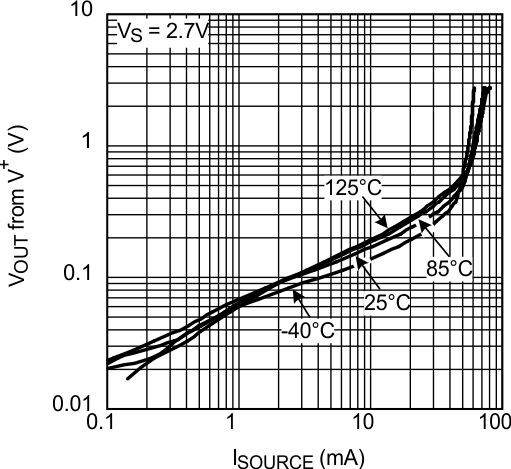 Figure 1. Output Swing vs. Sourcing Current
Figure 1. Output Swing vs. Sourcing Current
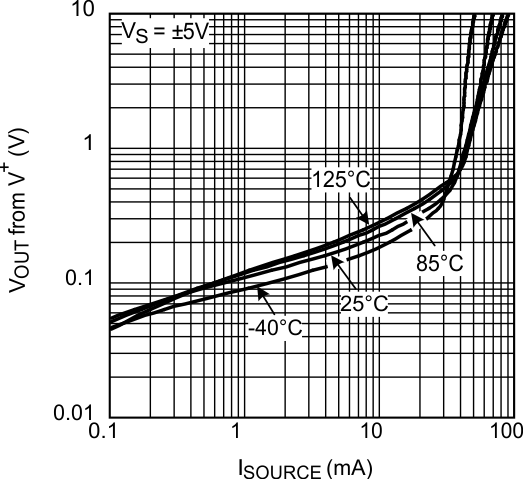 Figure 3. Output Swing vs. Sourcing Current
Figure 3. Output Swing vs. Sourcing Current
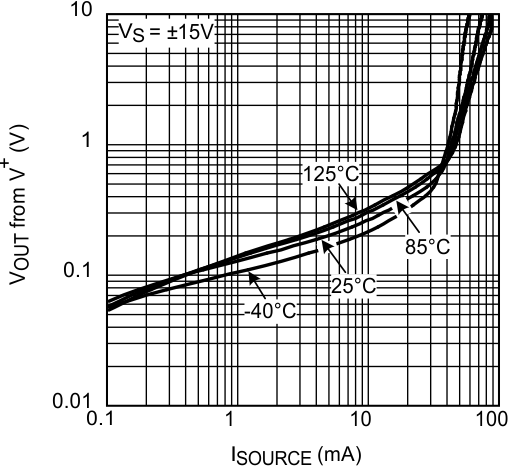 Figure 5. Output Swing vs. Sourcing Current
Figure 5. Output Swing vs. Sourcing Current
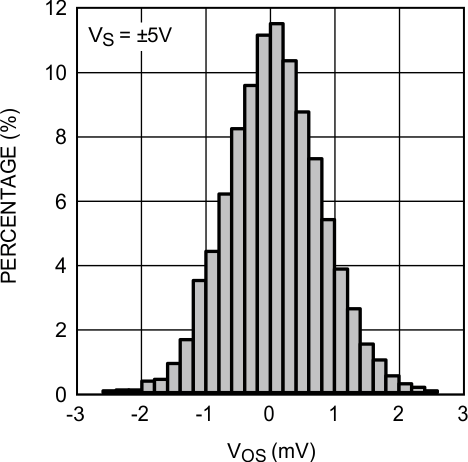 Figure 7. VOS Distribution
Figure 7. VOS Distribution
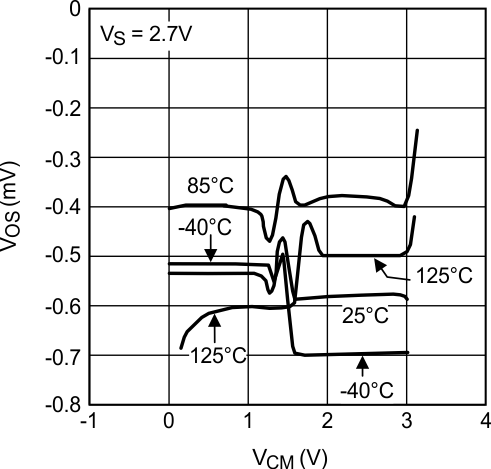 Figure 9. VOS vs. VCM (Unit 2)
Figure 9. VOS vs. VCM (Unit 2)
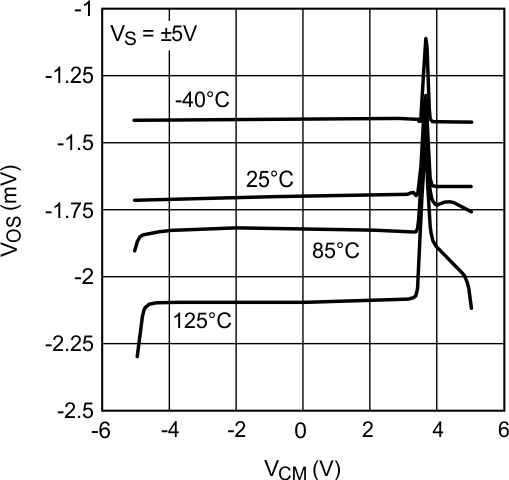 Figure 11. VOS vs. VCM (Unit 1)
Figure 11. VOS vs. VCM (Unit 1)
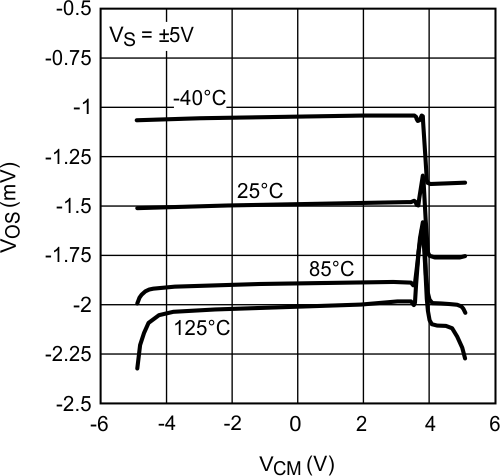 Figure 13. VOS vs. VCM (Unit 2)
Figure 13. VOS vs. VCM (Unit 2)
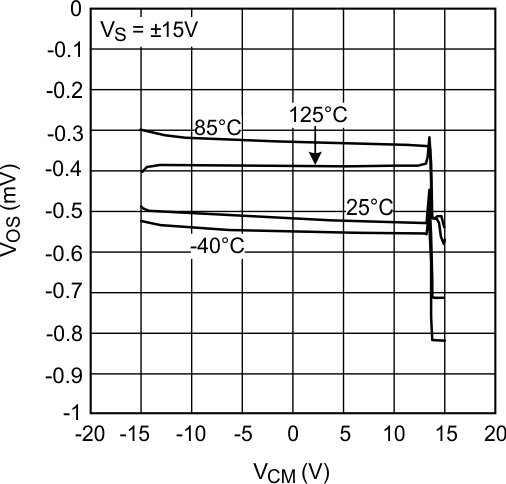 Figure 15. VOS vs. VCM (Unit 2)
Figure 15. VOS vs. VCM (Unit 2)
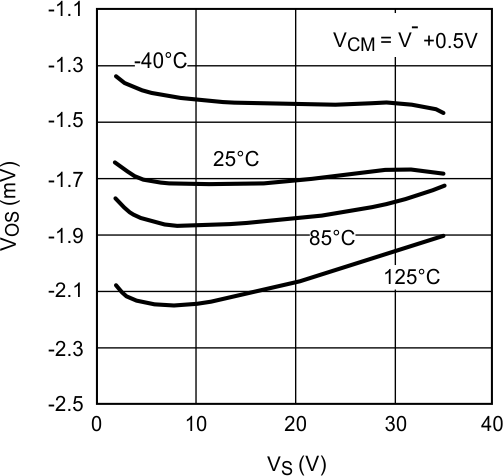 Figure 17. VOS vs. VS (Unit 1)
Figure 17. VOS vs. VS (Unit 1)
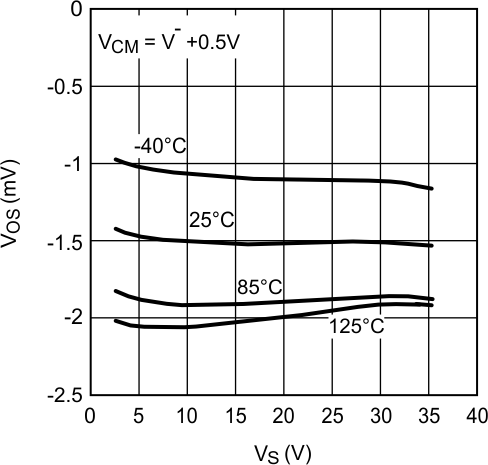 Figure 19. VOS vs. VS (Unit 3)
Figure 19. VOS vs. VS (Unit 3)
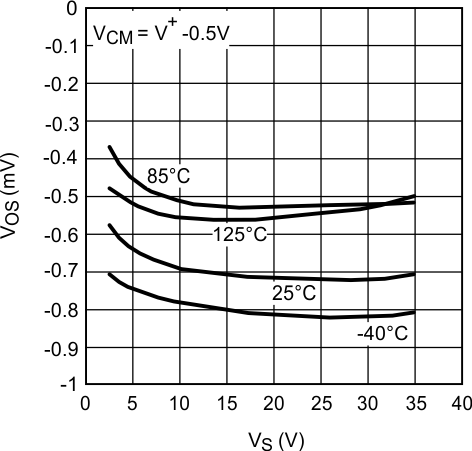 Figure 21. VOS vs. VS (Unit 2)
Figure 21. VOS vs. VS (Unit 2)
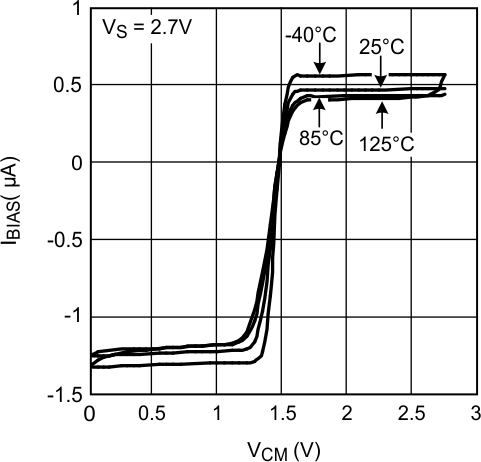 Figure 23. IBIAS vs. VCM
Figure 23. IBIAS vs. VCM
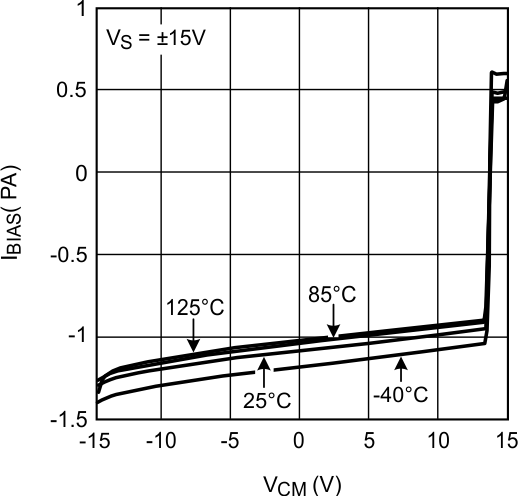 Figure 25. IBIAS vs. VCM
Figure 25. IBIAS vs. VCM
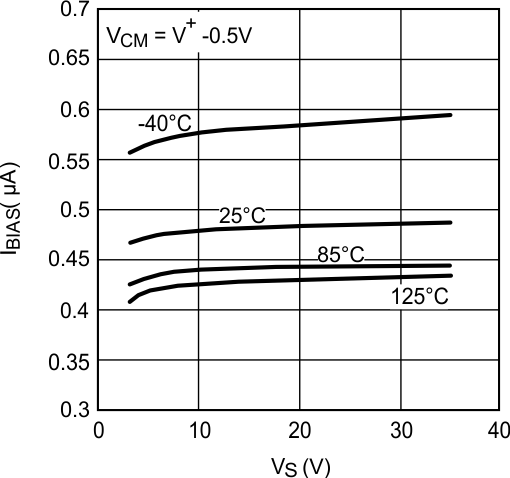 Figure 27. IBIAS vs. VS
Figure 27. IBIAS vs. VS
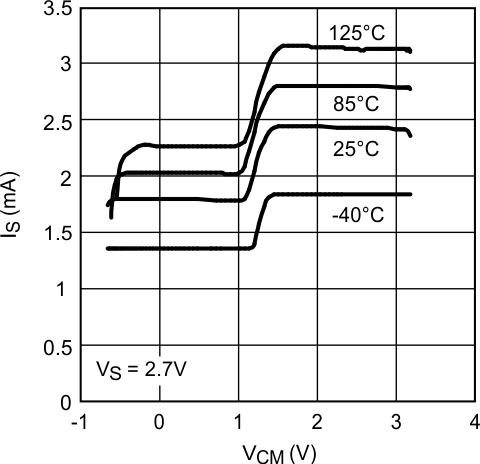 Figure 29. IS vs. VCM (LM7322)
Figure 29. IS vs. VCM (LM7322)
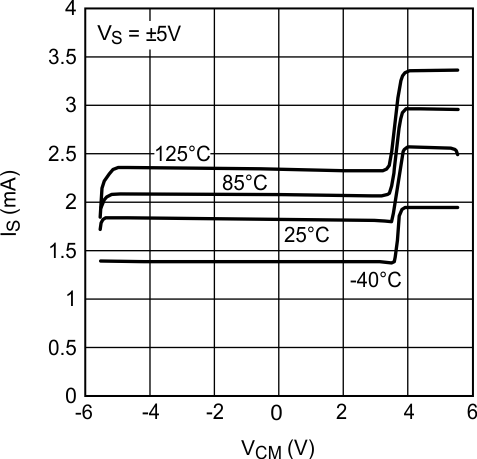 Figure 31. IS vs. VCM (LM7322)
Figure 31. IS vs. VCM (LM7322)
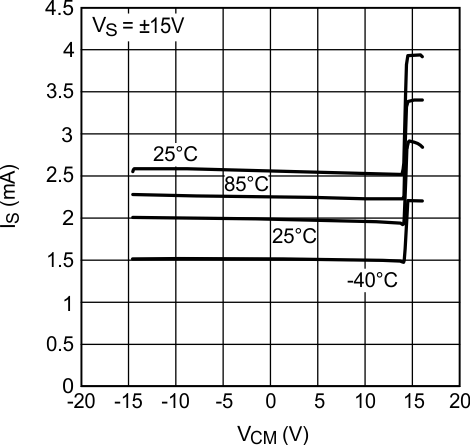 Figure 33. IS vs. VCM (LM7322)
Figure 33. IS vs. VCM (LM7322)
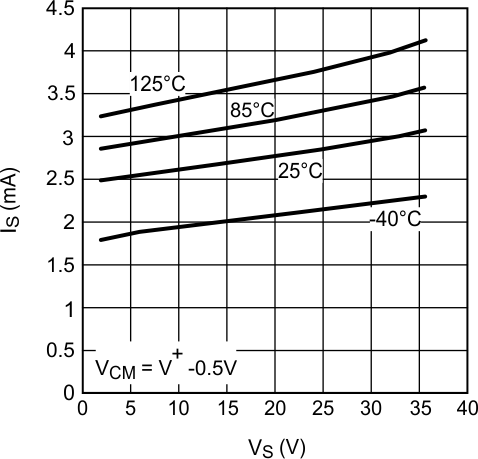 Figure 35. IS vs. VS (LM7322)
Figure 35. IS vs. VS (LM7322)
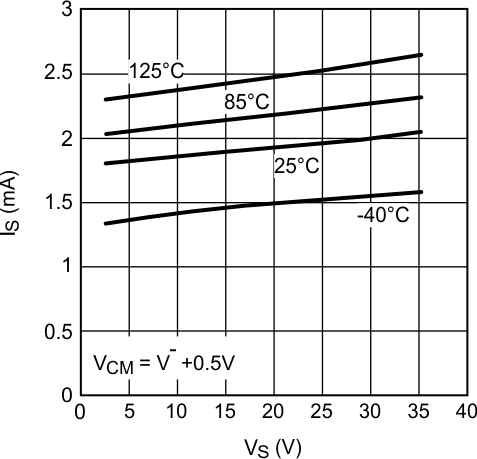 Figure 37. IS vs. VS (LM7322)
Figure 37. IS vs. VS (LM7322)
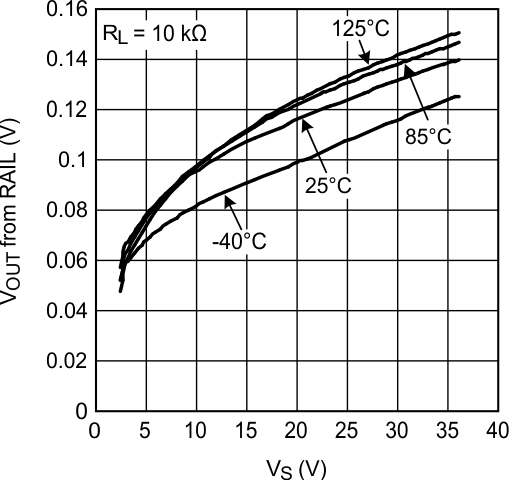 Figure 39. Positive Output Swing vs. Supply Voltage
Figure 39. Positive Output Swing vs. Supply Voltage
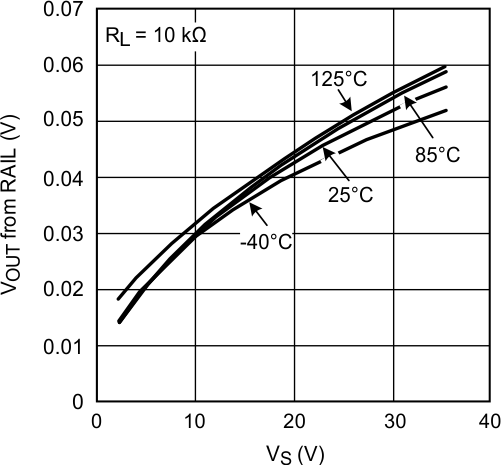
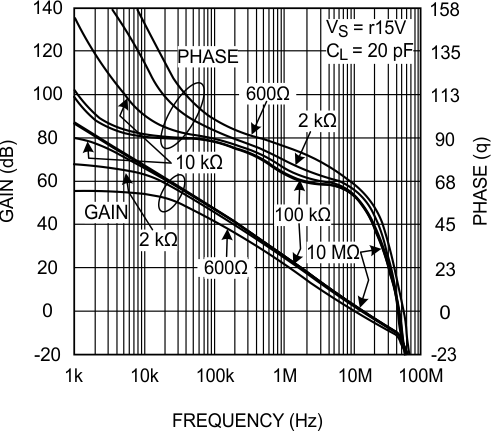 Figure 43. Open-Loop Frequency Response with Various Resistive Load
Figure 43. Open-Loop Frequency Response with Various Resistive Load
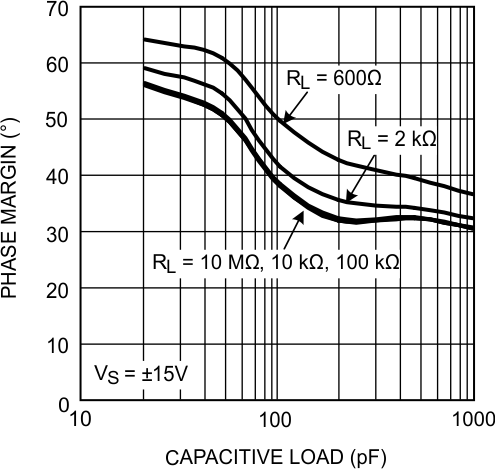 Figure 45. Phase Margin vs. Capacitive Load
Figure 45. Phase Margin vs. Capacitive Load
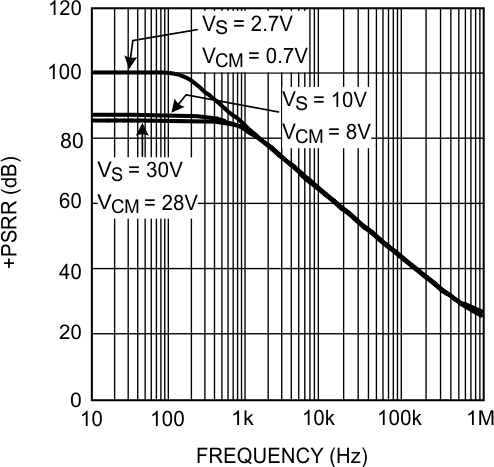 Figure 47. +PSRR vs. Frequency
Figure 47. +PSRR vs. Frequency
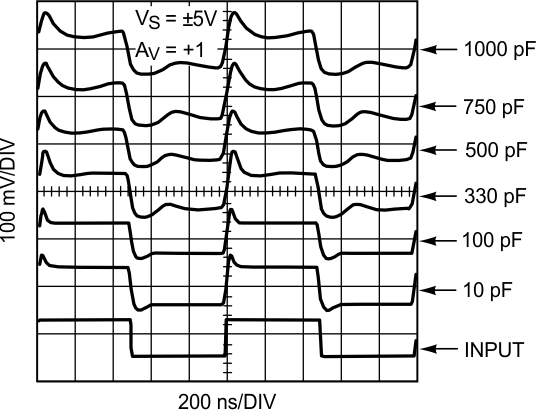 Figure 49. Small Signal Step Response
Figure 49. Small Signal Step Response
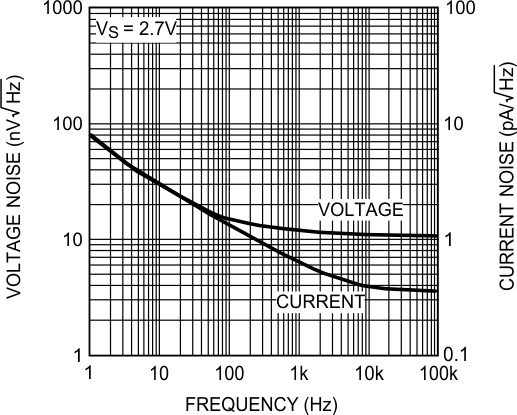 Figure 51. Input Referred Noise Density vs. Frequency
Figure 51. Input Referred Noise Density vs. Frequency
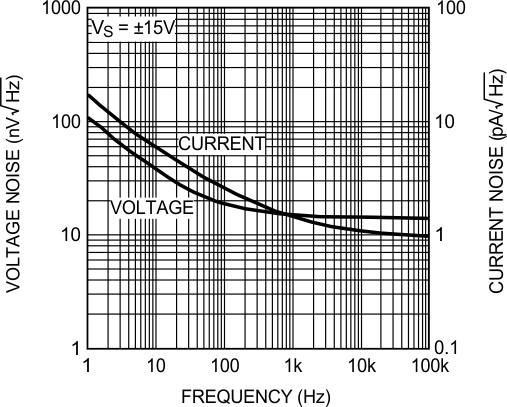 Figure 53. Input Referred Noise Density vs. Frequency
Figure 53. Input Referred Noise Density vs. Frequency
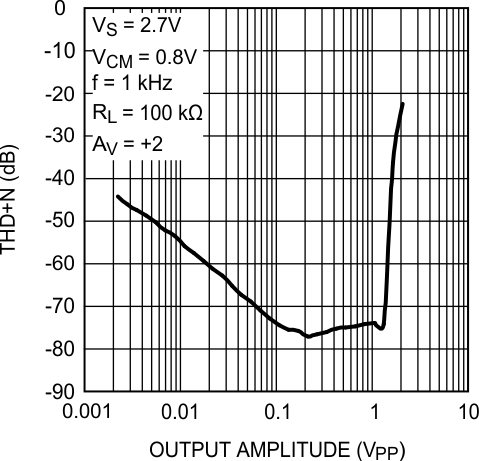 Figure 55. THD+N vs. Output Amplitude
Figure 55. THD+N vs. Output Amplitude
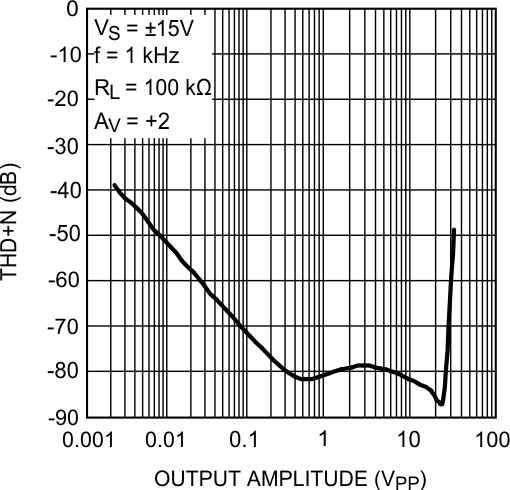 Figure 57. THD+N vs. Output Amplitude
Figure 57. THD+N vs. Output Amplitude
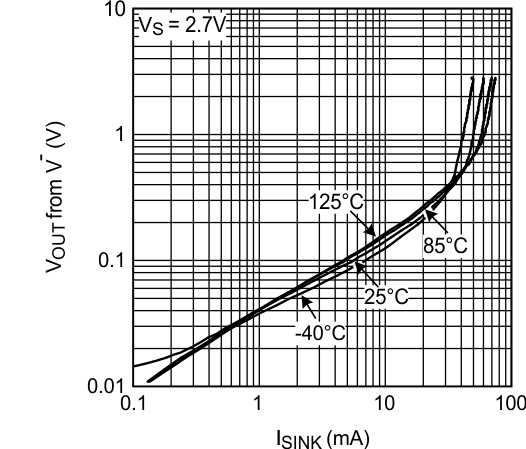 Figure 2. Output Swing vs. Sinking Current
Figure 2. Output Swing vs. Sinking Current
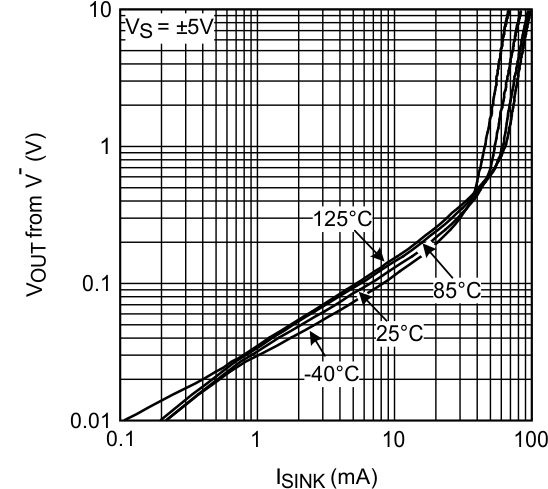 Figure 4. Output Swing vs. Sinking Current
Figure 4. Output Swing vs. Sinking Current
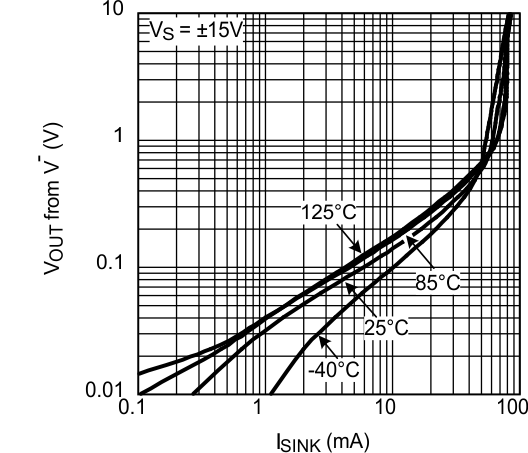 Figure 6. Output Swing vs. Sinking Current
Figure 6. Output Swing vs. Sinking Current
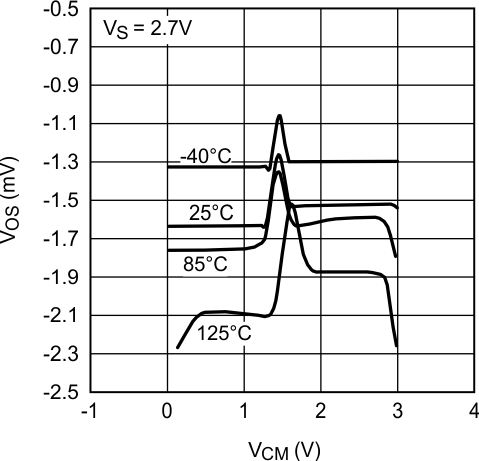 Figure 8. VOS vs. VCM (Unit 1)
Figure 8. VOS vs. VCM (Unit 1)
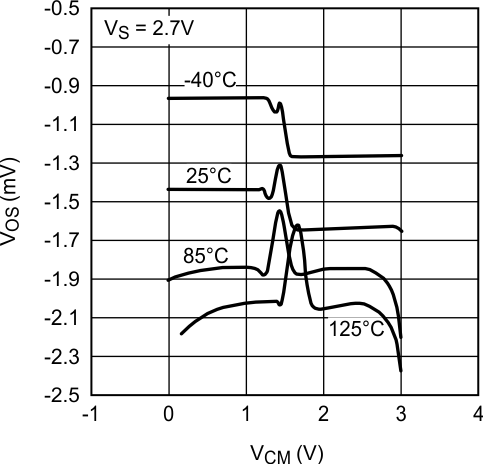 Figure 10. VOS vs. VCM (Unit 3)
Figure 10. VOS vs. VCM (Unit 3)
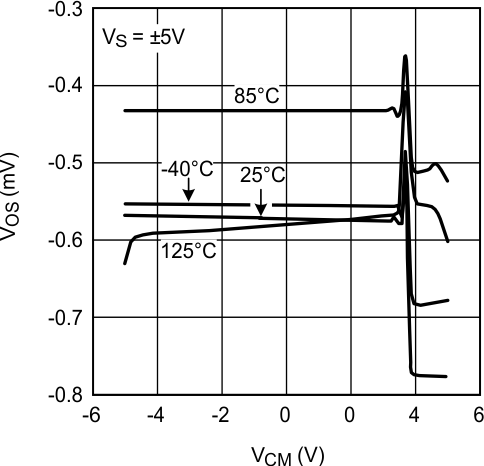 Figure 12. VOS vs. VCM (Unit 2)
Figure 12. VOS vs. VCM (Unit 2)
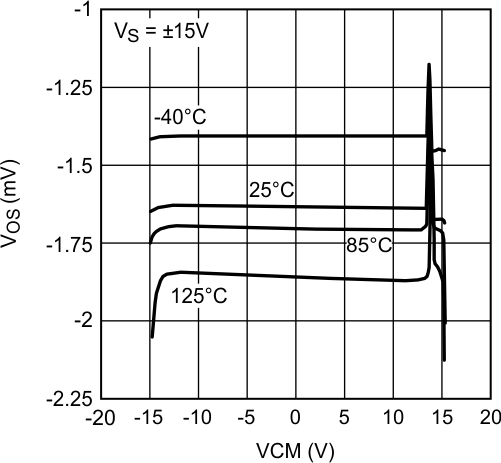 Figure 14. VOS vs. VCM (Unit 1)
Figure 14. VOS vs. VCM (Unit 1)
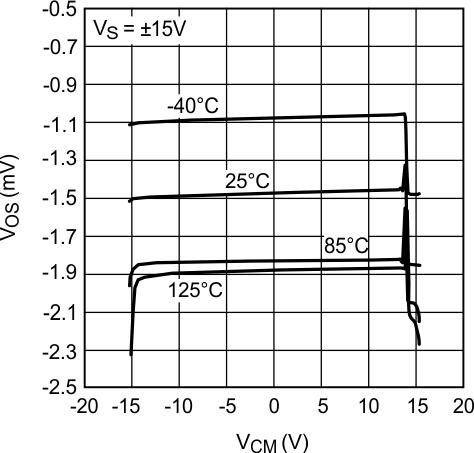 Figure 16. VOS vs. VCM (Unit 3)
Figure 16. VOS vs. VCM (Unit 3)
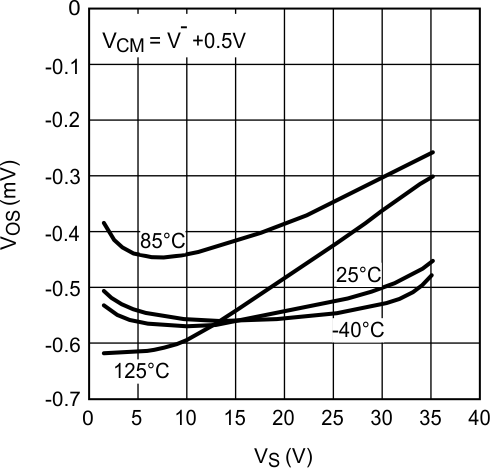 Figure 18. VOS vs. VS (Unit 2)
Figure 18. VOS vs. VS (Unit 2)
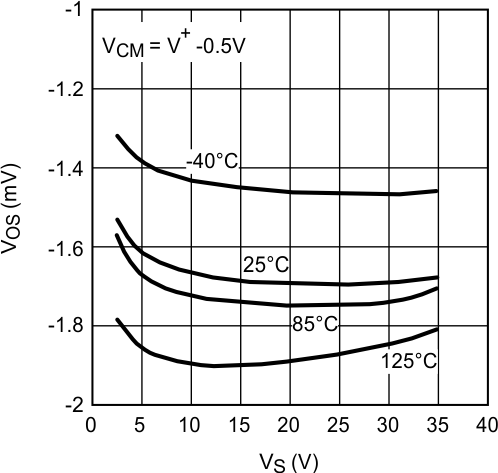 Figure 20. VOS vs. VS (Unit 1)
Figure 20. VOS vs. VS (Unit 1)
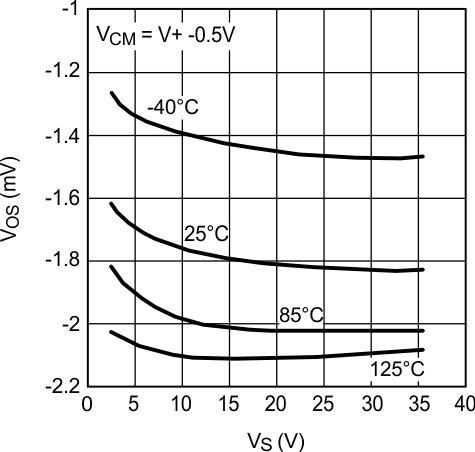 Figure 22. VOS vs. VS (Unit 3)
Figure 22. VOS vs. VS (Unit 3)
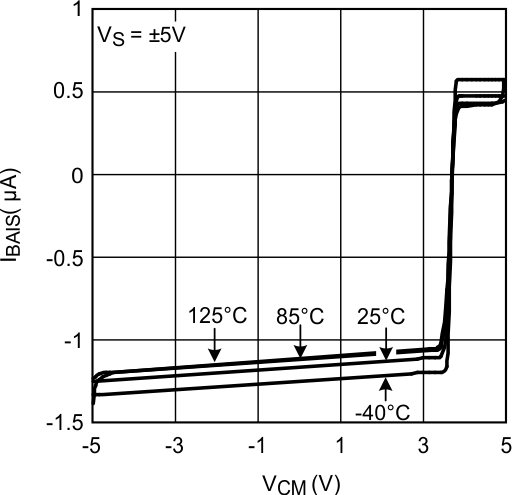 Figure 24. IBIAS vs. VCM
Figure 24. IBIAS vs. VCM
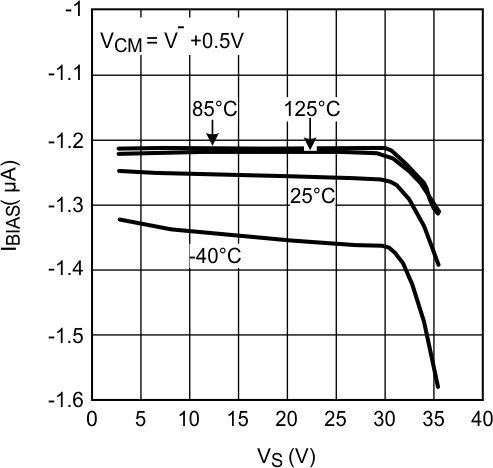 Figure 26. IBIAS vs. VS
Figure 26. IBIAS vs. VS
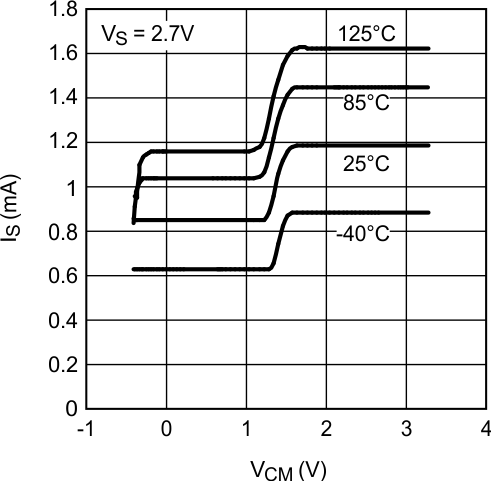 Figure 28. IS vs. VCM (LM7321)
Figure 28. IS vs. VCM (LM7321)
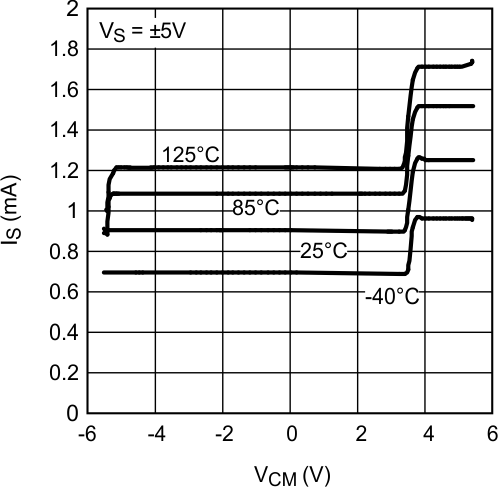 Figure 30. IS vs. VCM (LM7321)
Figure 30. IS vs. VCM (LM7321)
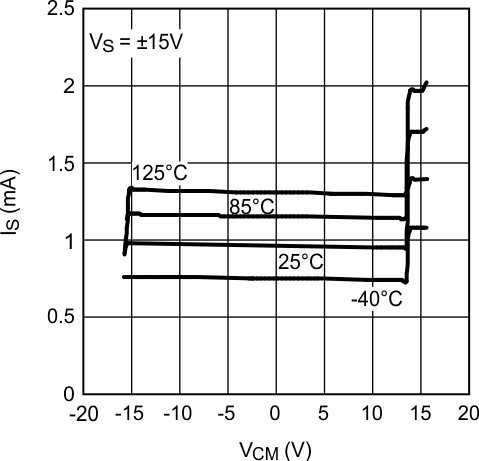 Figure 32. IS vs. VCM (LM7321)
Figure 32. IS vs. VCM (LM7321)
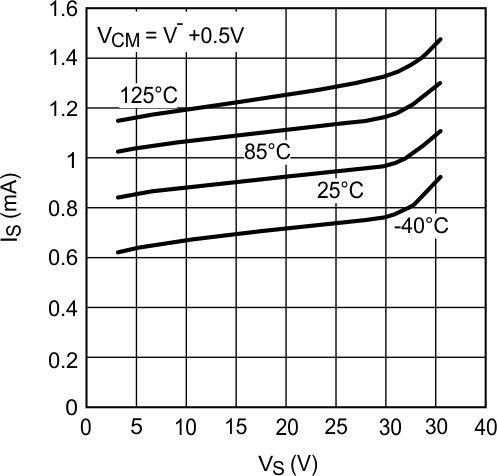 Figure 34. IS vs. VS (LM7321)
Figure 34. IS vs. VS (LM7321)
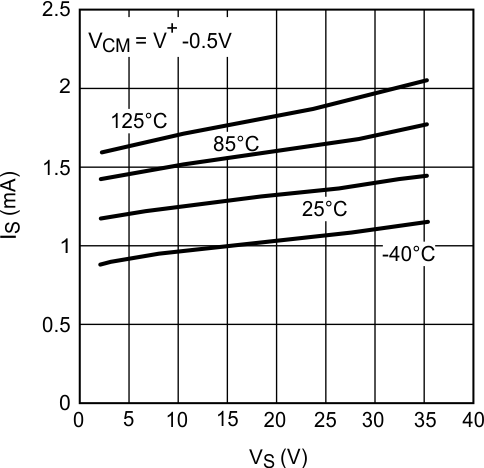 Figure 36. IS vs. VS (LM7321)
Figure 36. IS vs. VS (LM7321)
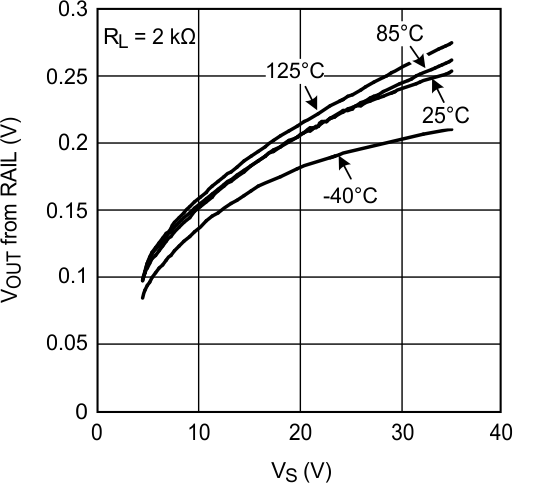 Figure 38. Positive Output Swing vs. Supply Voltage
Figure 38. Positive Output Swing vs. Supply Voltage
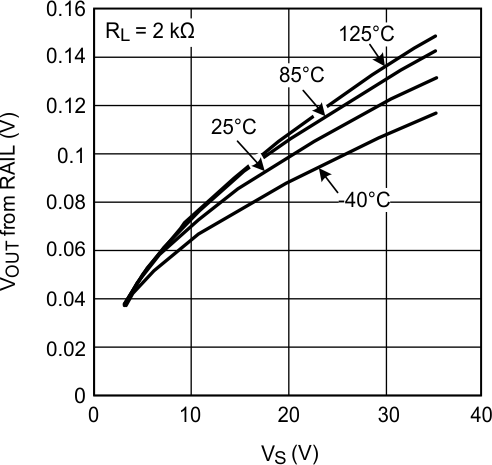 Figure 40. Negative Output Swing vs. Supply Voltage
Figure 40. Negative Output Swing vs. Supply Voltage
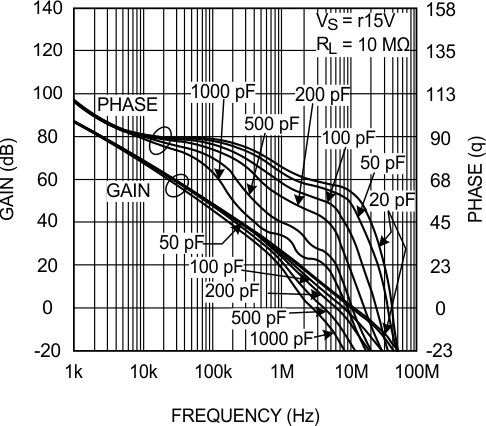 Figure 42. Open-Loop Frequency Response with Various Capacitive Load
Figure 42. Open-Loop Frequency Response with Various Capacitive Load
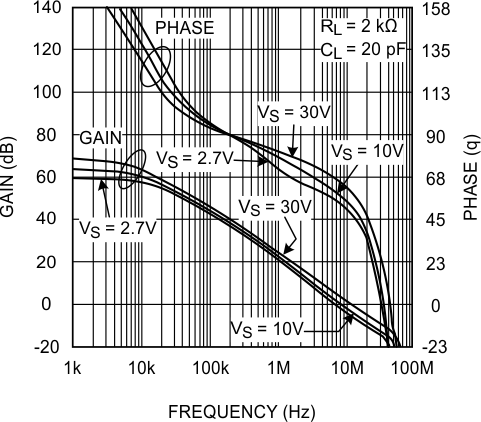 Figure 44. Open-Loop Frequency Response with Various Supply Voltage
Figure 44. Open-Loop Frequency Response with Various Supply Voltage
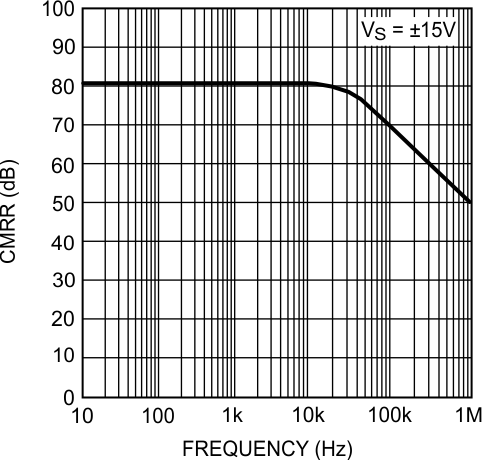 Figure 46. CMRR vs. Frequency
Figure 46. CMRR vs. Frequency
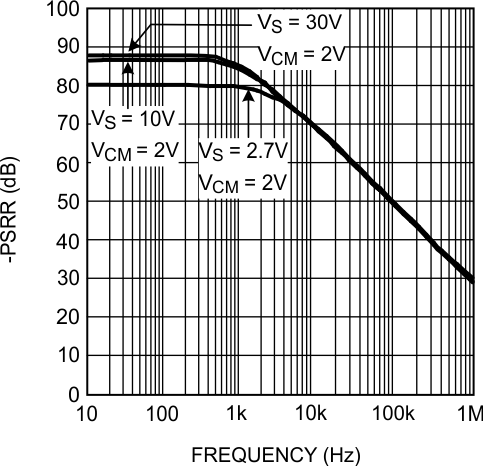 Figure 48. −PSRR vs. Frequency
Figure 48. −PSRR vs. Frequency
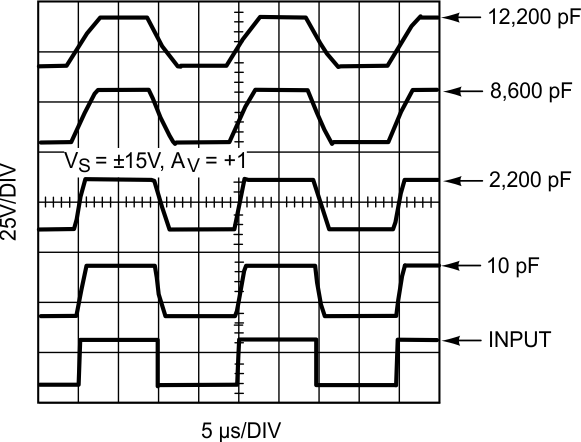 Figure 50. Large Signal Step Response
Figure 50. Large Signal Step Response
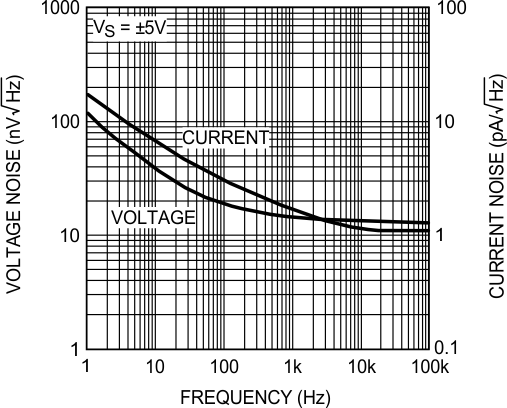 Figure 52. Input Referred Noise Density vs. Frequency
Figure 52. Input Referred Noise Density vs. Frequency
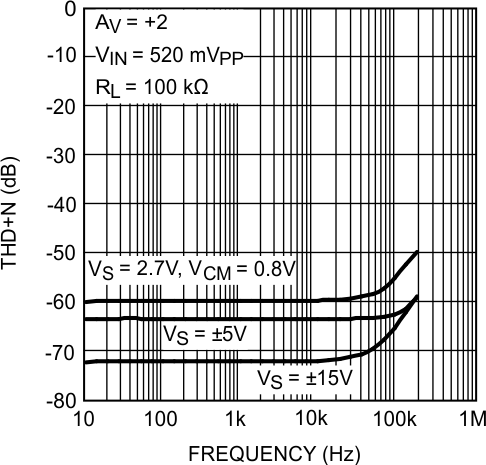 Figure 54. THD+N vs. Frequency
Figure 54. THD+N vs. Frequency
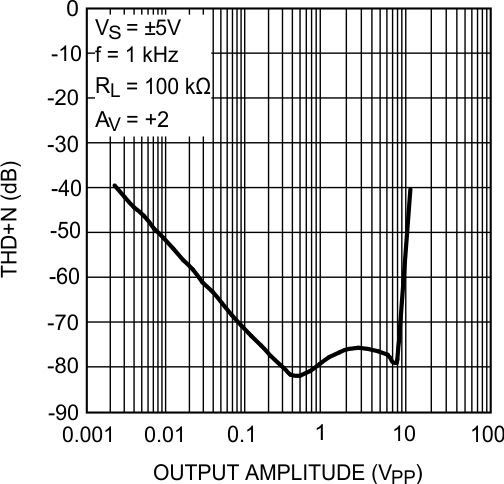 Figure 56. THD+N vs. Output Amplitude
Figure 56. THD+N vs. Output Amplitude